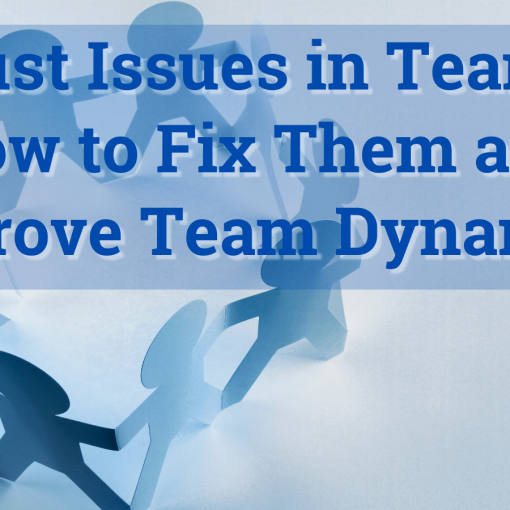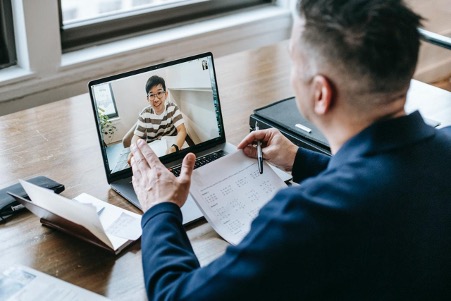I have very recently come to a paramount realization that I believe will not only help shape the work I am doing now, but will also guide my future as an educational leader and (someday when someone is willing to give me a shot) school administrator. A realization that will help focus my mindset and support the growth of the other teachers at my school and their students.
Ready for it?
Poor classroom instruction in many cases does not mean the teacher is a poor teacher, it means that the teacher has had poor training!
I realize that this might not be earth-shattering news to those of you who are already educational leaders in your own rights or have already come to this realization before I did. But let me explain why it means so much to me.
I began my tenure as Instructional Coach at Derby Middle School in November of 2015, although I was appointed to the position a few months before. During my interview I remember speaking to my building administrators about common goals such as increasing student engagement and better integration and utilization of educational technology (we are a 1:1 laptop school). I also took away from that conversation the fact that my principal brought up the potential of perhaps having to have some difficult or uncomfortable conversations with teachers about why what they are doing in their classrooms isn’t working – and maybe hasn’t been for some time.
That is why when I took over around Thanksgiving, after staying in my classroom position until my replacement was secured, I tried to search for answers as to WHY student engagement and educational technologies were major concerns of theirs, and now of mine. Like the quality educator I am, and the effective educational administrator I hope to be, I began to gather data. Almost the same kind of data that we have compiled on our students and has become so vitally important to the teaching/learning process. I decided that the best way to do it was to send out a Google Form to poll my colleagues about aspects of their teaching that I figured would provide insight as to where they felt they and the school stood on the matters of student engagement and educational technology.
What I initially found from this data was not shocking. Unsurprisingly, many teachers concured; they felt like student engagement was an issue at the school. For example, in response to the question, “Describe what you believe to be the greatest challenge in your classroom?” I saw answers such as “student engagement,” “unmotivated students,” “lack of motivation of kids to want to read,” self motivation and work ethic of students,”student excitement,” and “getting students to like the subject area.” And when I asked, “Are there any specific goals you have set for yourself this year?” multiple teachers admitted that they wanted to provide more student-centered instruction and one teacher responded that she wanted to “Increase student engagement while keeping high rigor.”
Initially, my wonderings about WHY student engagement and technology were such priority concerns of school and district leaders led me down a pretty treacherous path of blaming the teachers themselves – thanksfully never outwardly, or I would have undoubtedly lost some friends and the trust-based coaching relationship I had been working hard to build with them since November. Of course, I thought that if teachers were not providing sound instruction it must have meant they weren’t doing their jobs properly, for one reason or another. They weren’t planning properly. They didn’t spend enough time learning about new techniques. They just didn’t even seem to want to incorporate technology in their lessons. I could not have been more wrong in so many cases.
As I began meeting with teachers and visiting them in their classrooms, I thought that the problem may have also been one of time. I assumed the teachers were not bettering themselves as quickly as I expected because they didn’t have enough time to hone their craft or plan or implement new techniques/strategies. However, as time has gone on, I can see that change is happening. In some cases it is slowly but surely and in other cases it is fast and furious, usually dependent on the teacher’s own drive and passion. Not to say that it was my help that has totally transformed anyone, but I think this additional time for this little bit of on-the-job, school-based professional development has done one thing more than any other – given teachers some extra TRAINING that they would not have otherwise received.
And now I get it! As I move forward with my job and my district’s, administration’s and my personal goals of improving student engagement and enhancing the implementation and utilization of instructional technology, this new-found realization about my job as a trainer above all else has completely consumed me and inspired me.

Looking to level up your leadership? Enter your information to receive a FREE copy of my eBook
My next few blog posts will highlight a few new practices that I have come up with to continue to foster this type of training for myself and my colleagues. Here’s the first one:
I will lead by example by seeking professional development opportunities, studying the art of teaching, and growing my own Personal Learning Network (PLN).
- Professional Development Opportunities – The goal here is to learn as much as I possibly can to be able to support teachers of all content areas. One way I have done this so far is by being a participating member of the ACES Regional Coaches Council, a group of administrators, curriculum developers, tech coaches, department leaders and instructional coaches that meets quarterly to stay connected with ways to grow our staffs. I have also registered to attend the Yale School of Management Education Leadership Conference this year, and will continue to seek other in-person networking and development opportunities.
- Studying the art of teaching – Despite being an ELA teacher, I have to admit that I wrestled with my commitment to and enjoyment of reading for a long time. But I wanted to practice what I preached when I used to tell my students that if they just carefully chose books about topics they really enjoyed, they would find the time and passion for reading. So, I started reading more. Some of my most recent favorites have included The Art Of Coaching by Elena Aguilar, Teach Like A Pirate by Dave Burgess, Mindset: The New Psychology Of Success by Carol Dweck, and my principal recommended to the staff Working On The Work by Phillip Schlechty. Trust me, I will be reading more soon, too. I think my next will be The Innovator’s Mindset: Empower Learning, Unleash Talent, and Lead a Culture of Creativity by George Couros.
- Growing my own PLN – Perhaps the most influencial and enjoyable of all of these development practices, this process really began several years ago as I connected with other educators via social media and other in-person meetings and conferences, but only recently has taken on a life of itself. Since leaving my own classroom and becoming the Instructional Coach I have tried hard to expand even further. I have gained close to 200 new followers on Twitter (and growing by the day), learned from other educators by participating in Twitter chats such as #edchat, #etcoaches, #bfc530, #satchat, and #geniushour, and have learned about the art of the hashtag by creating #teachderby and #acescoaches and using others like #startwithwhy, #edtech, #educoach, and #tlap. Most recently, however an even newer form of communication among educators piqued my interest – Voxer! Using this push-to-talk app on cell phones and on the web for professional development is well summarized by Joe Mazza in this blog post, and here in this blog by Peter DeWitt. Voxer themselves published this blog post about it. Even this Edutopia blog post talks about it and is wonderfully described in this blog by EdTechReview. I am now connected to educators and educational and other leaders from around the country, and in a few cases around the world. Participating and listening to the chats happening in groups I belong to like EduMatch, #LeadUpChat, and Genius Hour/Makerspaces/PBL/20% Time have allowed me to soak up and/or contribute to trending educational topics ranging from student discipline and dress code to project-based learning to coaching teachers and many more.
Often, I wake up thiking that I have the best job in the world. And as the passionate, forward-thinking leader I am, I still look to grow myself and the others I work with. That is why I constantly reflect on what is working and what is not working in my organization – and I suppose why I was chosen to do the job that I now perform every day. To my leaders, to my colleagues, and most importantly to myself, I promise to keep working hard for you so that we can create that lifelong love of learning in our students that we strive toward!



